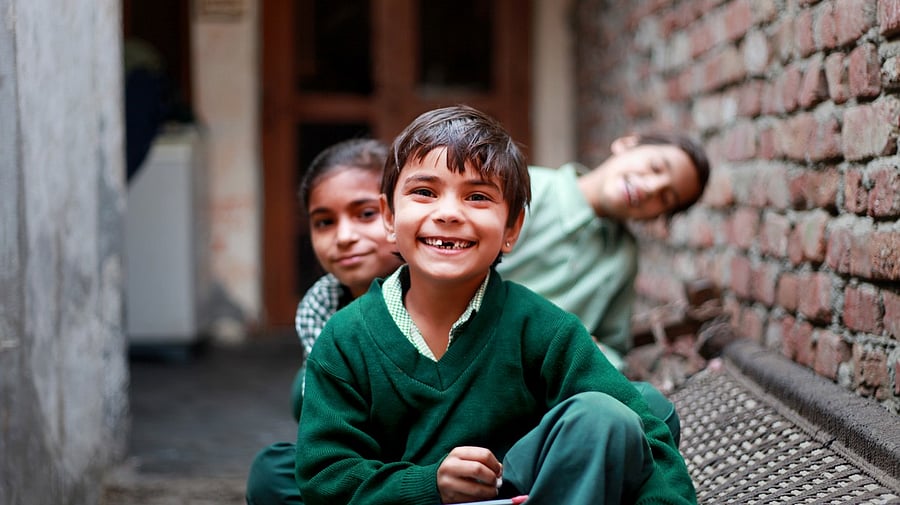
Indian children face acute risks from extreme heat, floods, and air pollution, particularly in rural and low-income communities. (Representative image)
Credit: iStock Photo
By 2050, more than a third of the world’s children will live in four countries – China, India, Nigeria and Pakistan. Findings from UNICEF’s The State of the World Report 2024, released on Wednesday, show that while the global population of children will touch 2.3 billion, India will have 350 million children by 2050 – a decline of 106 million from the children population India has today.
With 350 million children, by 2050, India will be home to 15 per cent of the global child population, the report projects. Suruchi Bhadwal, Director at the Earth Sciences and Climate Change programme of The Energy Research Institute (TERI) said that the findings from the report are particularly important for India. “It is critical for India to plan for the future so that children can achieve their full potential,” she said.
The report projects that the global population of 2.3 billion children is an indication of the stabilisation of demography. While India, China, Nigeria and Pakistan are expected to account for more than a third of the world’s child population by then, investments in education, healthcare, child benefits and skill development for children and young people are critical to address the challenges.
Cynthia McCaffrey, UNICEF India Representative, said while releasing the report that decisions that are made today will shape the world our children will inherit in 2050. “Collectively, we have the opportunity and responsibility to build a prosperous and sustainable future for all children. Placing children and their rights at the centre, in all strategies, policies and actions is the way forward,” she said.
The findings of the study also show that newborn survival rates globally has increased by nearly 4 percentage points from the 2000s to over 98% with the probability of a child surviving to the age of 5 rising by 1 percentage point from the 2000s to 99.5 per cent. Yet, globally, a billion children today live in countries at high risk of climate hazards.
“By the 2050s, significantly more children are projected to be exposed to extreme climate hazards compared with those in the 2000s,” the study states. The study also states that compared to day, eight more times children are likely to be exposed to extreme heatwaves, 3.1 times more children will be exposed to extreme river floods, 1.7 times more children will be exposed to extreme wildfires, 1.3 times more children exposed to extreme droughts, and, 1.2 times more children will be exposed to extreme tropical cyclones.
The study also shows that 23 per cent of the world’s children are projected to live in the 28 countries currently classified as low-income, which is more than double from the 2000s, when it was 11 per cent. However, the gross domestic product (GDP) per capita in East Asia, the Pacific and South Asia is projected to more than double by 2050.
By 2050, 95.7 per cent of children are projected to have at least a primary education, a significant rise from 80 per cent in the 2000s, and the gender gap in education is set to narrow down slightly.